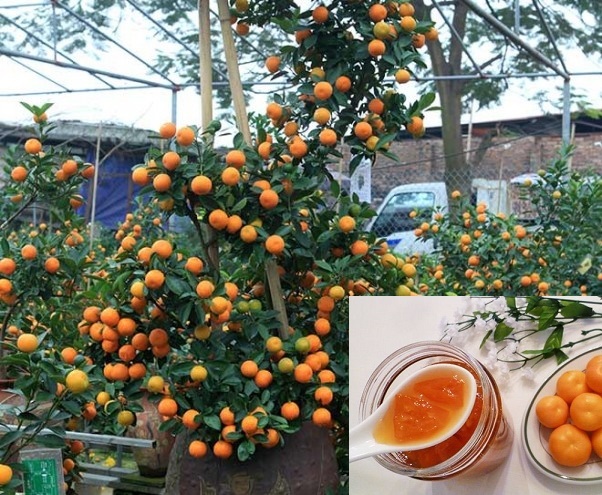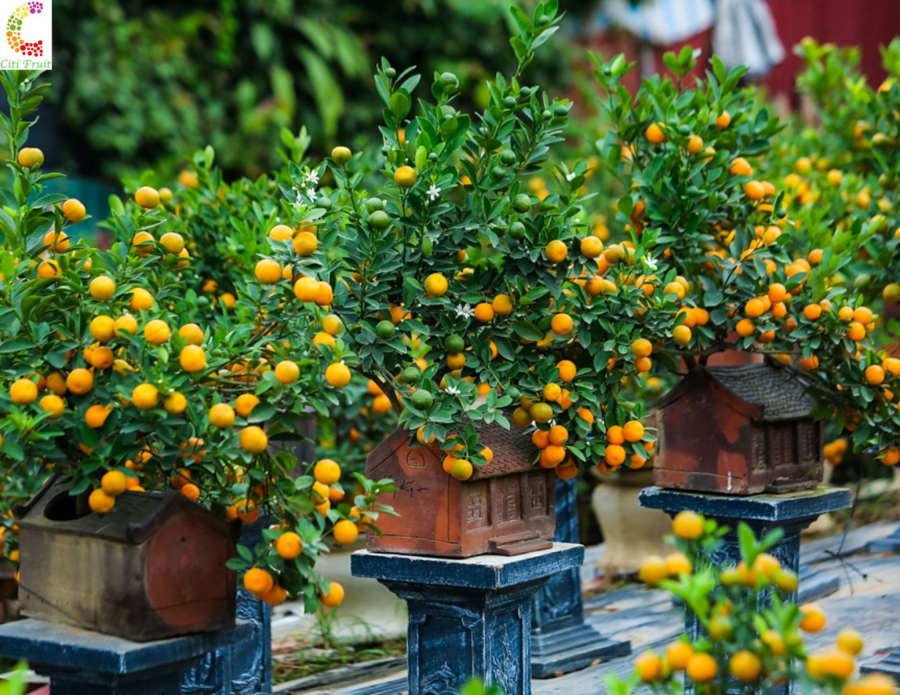Tết is over and many ornamental plants are being removed from homes. Kumquat is a popular choice for many families, but after Tet, many people feel wasteful because the ornamental kumquat trees are not edible. Can they be used for cooking and processing?
Can we eat the ornamental kumquats after Tet?
After Tet, many families want to use the ornamental kumquats to make spices and preserves, but according to the experience of kumquat growers, this is not recommended.
Kumquats have many health benefits such as treating coughs, clearing phlegm, aiding digestion, and cooling the body in hot weather, but these benefits only apply to naturally grown kumquats. The ornamental kumquat trees, on the other hand, should be avoided. Ornamental kumquats are usually sprayed with pesticides and fertilizers to preserve the appearance of the fruits and maintain their beautiful circular color. In bad weather, these chemicals are used even more.

Ornamental kumquat trees are grown for decorative purposes, so in order to keep the trees fresh and beautiful, growers may spray them with plant protectants, growth stimulants, or other unknown chemicals. Therefore, eating these kumquats is definitely harmful to your health, although the extent of the harm may not be immediately noticeable and may only become apparent after a prolonged period of time.
According to kumquat growers, they are not sure of the exact name of these chemicals, but they know that these chemicals are also used to ripen bananas and tomatoes quickly, giving them a bright, beautiful color and a longer shelf life. The chemicals used are usually in liquid form, which is mixed with pesticide and sprayed on the fruits while they are still green to speed up the ripening process, about a month before they are sold.
According to Associate Professor – Dr. Nguyen Duy Thinh from the Institute of Biological and Food Technology, Hanoi University of Science and Technology, using ornamental kumquats as food is a big mistake.
A kumquat grower who cultivates Four-Season kumquat in Tay Ho district openly shared that in addition to pesticides and fertilizers, ornamental kumquats also need to be treated with growth stimulants to preserve their appearance and prolong their shelf life. In years with bad weather, even more chemicals are used. Therefore, he strongly advises against eating ornamental kumquats. If you want to eat kumquats, he recommends growing your own kumquat trees without using any growth stimulants or pesticides. Alternatively, if you want to reuse the existing trees, you should pick all the fruits, prune some branches, and then plant the trees in the ground, taking good care of them. When the trees bear fruit again, you can eat them without worrying about any health issues.
The dangers of eating kumquats sprayed with chemicals

According to nutrition experts, eating kumquats with chemicals, which do not have a pleasant smell, can harm the stomach. The most dangerous aspect is that the growth stimulants in kumquats can affect the cells in the human body, causing them to grow faster and potentially leading to cancer. Moreover, these growth stimulants can also disrupt physiological functions…
In reality, there are different types of ripening agents, but the common active ingredient found in “Fruit ripening agents” is ethrel. This active ingredient is also found in plant growth regulators, but it is mainly used to stimulate latex production in rubber trees. This active ingredient is also found in soilless substrates. As the ornamental kumquats get closer to the selling date, growers tend to spray more chemicals to maintain the color and prevent the fruits from falling off. Therefore, the accumulation of harmful chemicals on the leaves, fruits, and even inside the kumquats is significant. Thus, it is best to discard all the ornamental kumquats and not soak or eat any fruits from ornamental kumquat trees. Natural kumquats have a pleasant aroma, while kumquats sprayed with chemicals have no aroma and can harm the stomach when consumed.






























